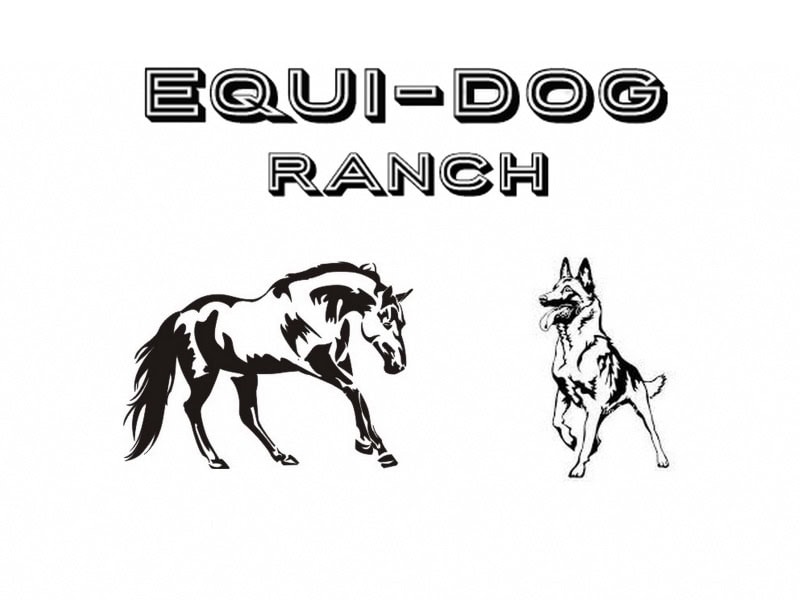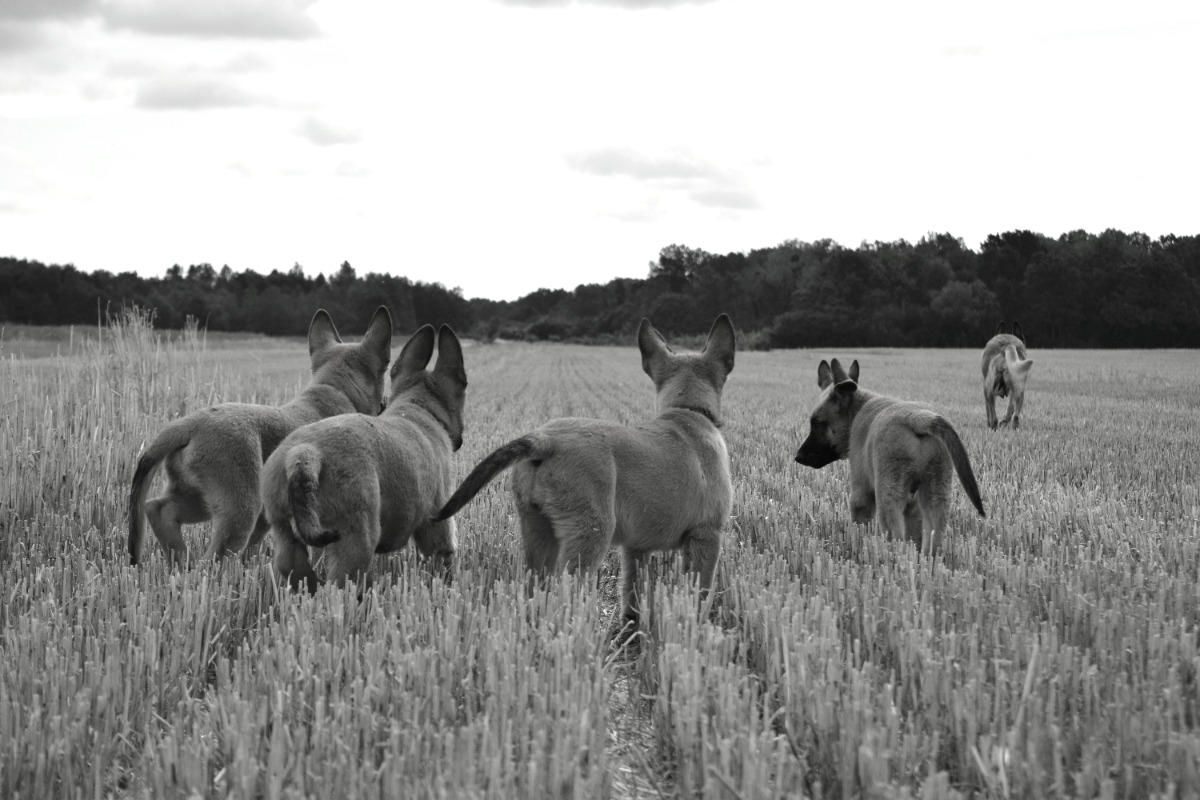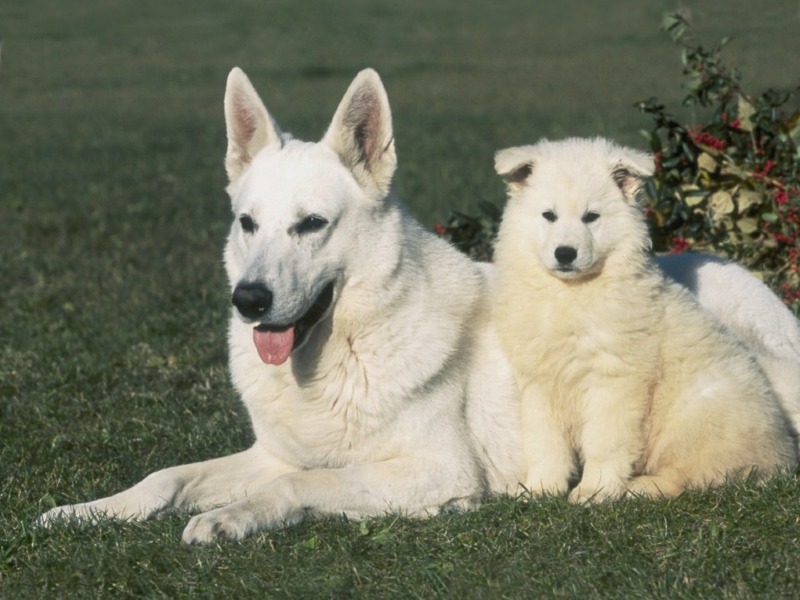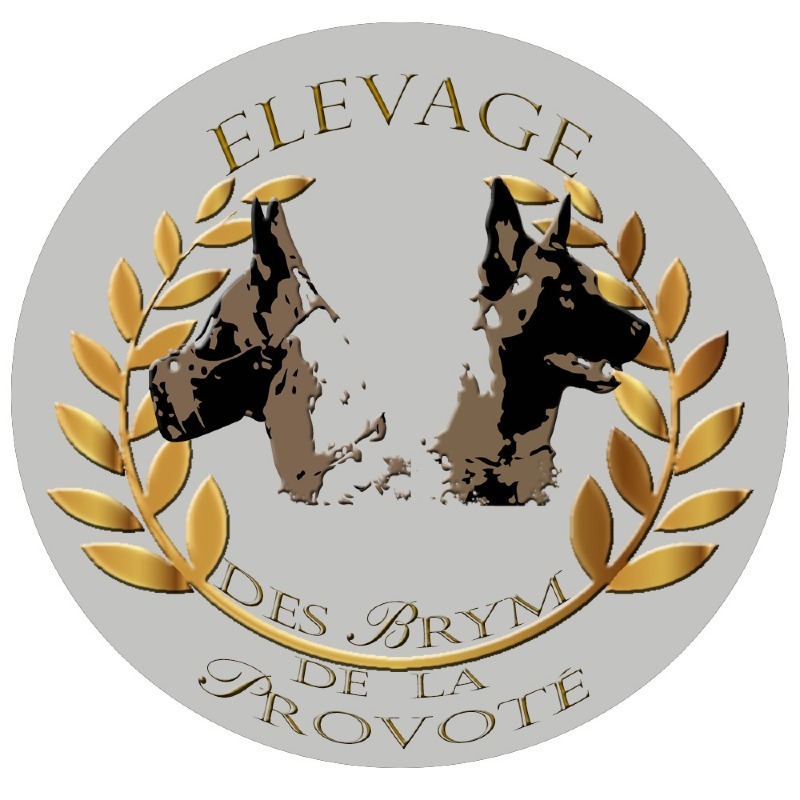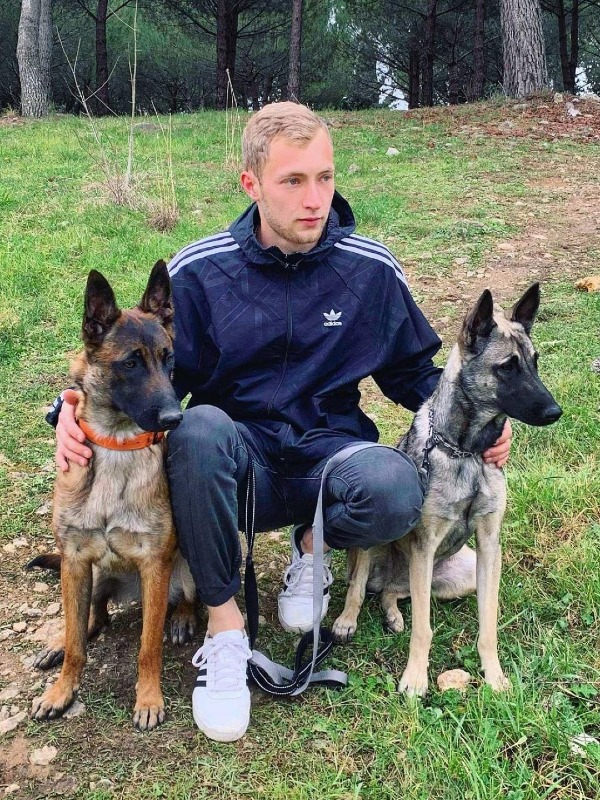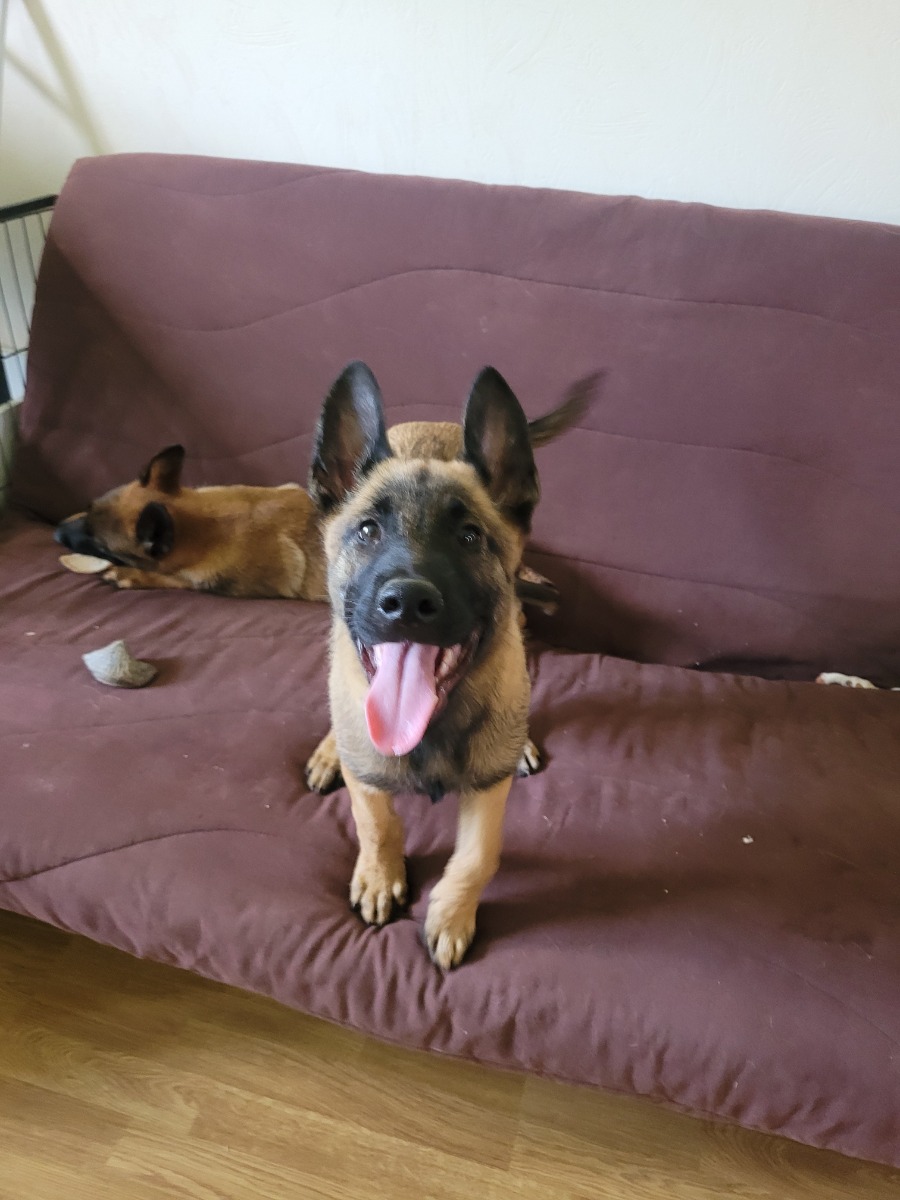Belgian shepherd malinois
Autres noms : Belgians shepherds
Discover the Belgian Malinois, an intelligent, agile, and loyal dog, ideal for work and companionship. Learn all about its characteristics, training, and temperament.
Awareness of acquiring an animal
Adopting or breeding a dog is a responsibility that must be carefully considered. Dogs are loyal companions that require time, attention, and constant care. Whether for leisure, passion, or professional breeding, it is crucial to understand the specific needs of each breed. Provide them with a loving and stimulating environment, and avoid any impulsive acquisition that could harm their well-being. Be a vigilant and committed owner for a happy and healthy companion.
To learn more about animal welfare, we invite you to consult our FAQ by clicking the button below:
Origins and history
The Belgian Malinois is a dog breed that originated in Belgium during the 19th century. It was developed primarily in the region of Mechelen, from which it gets its name. Breeders aimed to create a versatile dog capable of assisting farmers in herding livestock and protecting property. Due to its intellectual and physical abilities, this breed quickly gained popularity beyond its agricultural functions.
At the beginning of the 20th century, the breed was officially recognized and standardized. During World War I, the Belgian Malinois was employed by armies as a working dog for messaging, detection, and search missions. Its agility, endurance, and intelligence made it a preferred choice for these demanding tasks.
In the decades that followed, the Belgian Malinois was also integrated into police forces and military units around the world, proving once again its effectiveness as a working dog. Today, this breed is widely appreciated as a pet, but it also continues to serve authorities, thanks to its exceptional skills and ability to learn complex tasks.
Physical characteristics
The Belgian Malinois is a medium-sized dog with a balanced and athletic build. Its stature gives it an impression of robustness, although it remains agile and light. On average, males weigh between 25 and 30 kg, while females weigh around 20 to 25 kg. The height at the withers generally ranges from 60 to 66 cm for males and from 56 to 62 cm for females.
The coat is one of the distinctive features of this breed. It is short, dense, and well-fitted to the body, providing protection against the weather. The coat color is typically fawn with a black mask, giving the dog a distinctive and elegant appearance. The undercoat is light but provides adequate insulation.
The ears are triangular, upright, and well-proportioned, contributing to the alert and attentive expression of the animal. The eyes, almond-shaped and dark brown in color, convey a keen intelligence and high receptiveness. The muscular body, with a well-developed chest and powerful limbs, enhances the Belgian Malinois's ability to excel in various physical activities. This dog is often valued for its endurance and speed, essential traits for its working roles, whether in police work, search and rescue, or as an active companion.
Character
The Belgian Malinois is a dog renowned for its intelligence and liveliness. This breed is distinguished by its great learning ability and its desire to work closely with humans. This trait makes it an ideal companion for a variety of activities, whether in sporting disciplines or in service missions, such as search and rescue.
Furthermore, the Belgian Malinois is a naturally protective dog. It is very attached to its family and shows unwavering loyalty. This character makes it vigilant and attentive to its environment, making it an excellent guard dog. However, it is crucial to socialize this dog well from a young age so that it develops balanced behaviors in the presence of strangers.
The energy of the Belgian Malinois is also noteworthy. These dogs require a lot of physical and mental exercise to thrive. They excel in activities that stimulate their agility and work instinct, such as obedience, frisbee, or canine sports. In the absence of adequate stimulation, they can become destructive or develop undesirable behaviors.
Finally, their sensitivity makes them attentive companions to their owner's emotions. They react strongly to mood changes and show empathy towards those around them. This emotional connection strengthens the bond with family members. In summary, the Belgian Malinois is a dynamic, intelligent, and loyal dog that requires commitment and proper training to realize its full potential.
Life expectancy
The lifespan of the Belgian Malinois is typically between 12 and 14 years. This longevity can vary depending on several factors, such as genetics, lifestyle, and the care provided to the dog. A good diet, regular physical activity, and routine veterinary visits can help ensure a healthier and longer life.
The overall health of the Belgian Malinois, like any breed, is influenced by hereditary predispositions. Certain health conditions, particularly joint problems or heart diseases, can affect their lifespan. Paying special attention to joint health, especially in the early years of life, is crucial for minimizing the risks of dysplasia.
Furthermore, the environment in which the dog lives also plays an essential role. A stimulating living environment, rich in interactions and exercise, will be beneficial not only for its physical health but also for its mental well-being. Thus, by providing proper care and monitoring its health, one can help maximize the lifespan of this active and intelligent breed.
Exercise and activity needs
The Belgian Malinois breed is known for its high energy and remarkable intelligence. These characteristics make this breed an excellent companion for those who engage in regular physical activities and seek a pet that can keep up with them on their adventures. Dogs of this breed have high exercise needs, requiring at least one hour of daily activity. It is crucial to vary the types of exercises to maintain their engagement and mental stimulation.
Recommended activities include brisk walks, outdoor runs, and fetch games. Obedience training and agility are also effective ways to exercise their minds while strengthening the bond with their owner. Belgian Malinois dogs excel in canine sports, which allows them to expel energy while keeping mentally engaged. A lack of exercise can lead to behavioral issues, such as boredom or anxiety.
Therefore, it is essential to consider these specific needs when adopting a Belgian Malinois. A well-balanced exercise routine promotes not only the physical health of the dog but also contributes to its mental well-being, ensuring a happy and well-adjusted companion.
Recommended diet
The diet of a Belgian Malinois shepherd dog must be carefully balanced to meet its specific needs. Being an energetic and active breed, it is crucial to provide nutrients suited to its energy level. In general, high-quality food rich in animal protein is recommended. Proteins support muscle growth and recovery after exercise, which is particularly important for this breed.
Complex carbohydrates, such as brown rice and sweet potatoes, are also essential. They provide a sustainable energy source for physical activities. Avoid foods high in simple carbohydrates, which can lead to weight gain and long-term health issues. Additionally, healthy fats, such as those from fish oils, are beneficial for a shiny coat and healthy skin.
It is important to divide meals into several portions throughout the day to prevent digestive problems. Finally, remember to always provide fresh, clean water. Regular check-ups with a veterinarian will help adjust specific dietary needs based on your dog's age, weight, and activity level.
Training and obedience
The Belgian Malinois is a dog breed renowned for its intelligence and learning capacity. Training these dogs should begin at a young age, with early socialization and varied experiences. This includes interactions with other animals, people, and different environments. This stage is crucial for developing balanced behavior and preventing anxiety or fear issues in adulthood.
Training the Belgian Malinois should be based on positive methods. Using rewards, such as treats or praise, reinforces desired behaviors. Consistency and clarity in commands are essential, as these dogs are sensitive to variations in tone of voice and non-verbal signals. Short training sessions, punctuated with games, are ideal for maintaining their attention and motivation.
Due to their high energy levels, these dogs require regular physical activity and mental exercises. Activities such as agility, tracking, or protection work are particularly beneficial. Finally, daily mental stimulation is essential to avoid boredom, which can lead to destructive behaviors. A good balance between exercise, training, and affection will foster a harmonious relationship with this dynamic and affectionate breed.
Behavior with children
The behavior of Belgian Malinois shepherd dogs with children is generally positive, provided they are properly socialized from a young age. These dogs are known for their intelligence and desire to please, which often makes them responsive to children’s signals. When exposed to interactions with children from an early age, they can form close bonds and develop a protective relationship.
However, due to their energetic temperament, it is crucial to supervise interactions between these dogs and children. Their need for physical activity can lead to more intrusive behaviors, such as jumping or exciting young children, which may not be well received by little ones who do not share the same energy. Therefore, it is important to teach children to interact calmly and respectfully with the dog to avoid potentially stressful situations.
Socialization and training are essential elements to ensure appropriate behaviors. By exposing the dog to different situations, environments, and people, including children, balanced behavior is encouraged. Positive and consistent training can also reinforce values of calmness and patience in the dog, contributing to harmonious cohabitation. In summary, with proper training and adequate socialization, these dogs can become valuable companions for children.
Compatibility with Other Animals
The Belgian Malinois is an intelligent and active dog, often used in working roles such as security or service. When it comes to compatibility with other pets, several factors need to be considered.
First, the temperament of the Malinois plays a key role in its sociability. This dog is generally very affectionate and protective towards its family, but it may show some mistrust towards strangers and other animals. Early positive socialization is essential for it to learn how to interact properly with other animals, including dogs and cats.
Next, its high energy level can pose challenges. This dog requires a lot of exercise and stimulation. If its physical and mental needs are not met, it can become destructive or develop undesirable behaviors, which could affect its interaction with other animals. Therefore, it is important to provide appropriate activities and playtime with its peers to promote harmonious coexistence.
Finally, the individual temperament of each animal also plays a role. Some Malinois may be very tolerant and friendly with other species, while others may be more dominant and reactive. Observing and adapting the family environment will help ensure successful coexistence. Overall, with proper training and careful socialization, the Belgian Malinois can live in harmony with other pets.
Grooming needs
The Belgian Malinois is an active and intelligent dog breed that requires regular grooming and maintenance to ensure its health and well-being. Its coat, made up of short and dense hair, requires weekly brushing. This helps to remove dead hair, maintain the coat's shine, and reduce the amount of shedding in your home.
Shedding periods, which primarily occur in spring and autumn, require extra attention. During these times, more frequent brushing, up to several times a week, is recommended to manage the amount of hair and prevent mats.
In addition to grooming, it's essential to monitor the dog's ears, eyes, and nails. The ears should be checked regularly for any buildup of wax or dirt, and the nails should be trimmed as needed to avoid discomfort while walking. Bathing can be done every few months, or more frequently if necessary, using a suitable shampoo to avoid disrupting the skin's natural balance. Finally, a good diet and regular exercise complete the care for this dynamic breed.
Health
The Belgian Malinois is an active and intelligent dog breed, but like any breed, it has certain health issues that are important to be aware of.
Firstly, hereditary diseases can affect this breed. Hip dysplasia and elbow dysplasia are among the most common conditions. These joint disorders can lead to pain and mobility difficulties, making genetic evaluation essential before purchasing a puppy.
Next, eye problems such as cataracts or retinitis are also observed. Regular screenings by a veterinarian can help detect these conditions early, thereby offering treatment options before issues worsen.
Finally, the Belgian Malinois requires adequate physical activity. A lack of exercise can lead to obesity and behavioral problems. Therefore, a balanced diet and a rigorous exercise routine are crucial for maintaining overall good health. Regular veterinary visits and preventive care are also recommended to ensure optimal longevity.
Environment and habitat
The Belgian Malinois is a dog breed originating from Belgium, particularly suited for an active environment. This dog needs sufficient space to expend physical and mental energy. A fenced garden is ideal, but regular outings are essential to meet its exercise needs.
In terms of habitat, the Malinois thrives in settings where it can interact with its family. This dog is very social and requires human presence, which makes it particularly suitable for active households. Rural or suburban environments are often more favorable, as they provide the necessary space to run and play.
However, apartment living is possible as long as frequent walks and stimulating activities are ensured. The intellectually curious Malinois flourishes in activities such as agility or obedience. Its short coat requires minimal maintenance, but regular brushing is recommended to avoid excessive shedding. Thanks to its sociability, this dog adapts well to families with children, provided it is properly socialized from a young age.
Name ideas
Choosing a name for a Belgian Malinois can seem simple, but it's a process that deserves thought. A good name should be short, easy to pronounce, and easy for the dog to understand. It should also evoke characteristics or personality traits that you appreciate in your companion. Consider how you will use this name in daily life; it should be pleasant to say and easily recognizable for the dog.
Also think about the language in which you choose the name. Dogs respond better to clear and distinct sounds. Avoid names that are similar to common commands like "sit" or "no." Finally, you might choose a name that reflects the cultural heritage of the Malinois, a breed originally from Belgium, which can add a personal touch.
Here are some suggestions:
Leon, Roxy, Titan, Zara, Odyssey, Atlas, Bella, Flash, Noir, Titania, Ember, Simba, Onyx, Flick, and Jazz.
Average purchase price
The price of a purebred dog can vary significantly based on several factors, including age, pedigree, geographical location, and place of purchase. Generally, for a purebred puppy, you should expect an average cost between 800 and 2,000 euros.
Puppies from prestigious bloodlines, who have won titles in conformation or performance, can reach higher prices. Renowned breeders, who commit to adhering to breed standards and ensuring the health of their animals, may also charge higher amounts.
It is important to note that the initial purchase cost is just one part of the expenses associated with pet ownership. It is also essential to consider veterinary fees, food, accessories, and possibly training. These costs include vaccinations, spaying or neutering, and other necessary care to ensure the animal's well-being.
In summary, purchasing a dog of this breed represents a substantial financial commitment, and it is crucial to prepare thoroughly before making such a decision.
Expenses
The monthly expenses associated with owning a Belgian Malinois shepherd dog vary depending on several factors, but a general estimate can be provided. On average, the costs related to food can amount to approximately 50 to 80 euros per month. This amount depends on the quality of the chosen food and the size of the animal.
In addition to food, veterinary care expenses represent a significant portion of the budget. Annual veterinary consultations and vaccinations can be estimated at around 10 to 30 euros per month. However, it is essential to consider the possibility of pet health insurance, which can cost between 20 and 50 euros monthly, depending on the level of coverage.
Hygiene-related expenses, such as grooming, can vary, but one can expect to spend around 20 to 40 euros each month. Finally, accessories like toys, pads, and walking equipment can add an additional 20 to 30 euros per month. In total, it is reasonable to budget between 120 and 250 euros per month to properly care for a dog of this breed.
Destination and usage
The Belgian Malinois is a highly regarded dog for its exceptional qualities as a companion animal. This breed is particularly appreciated for its sharp intelligence and affectionate nature, making it an ideal companion for active families. These dogs are very loyal, often forming strong bonds with their owners. They are also capable of adapting to various environments, whether urban or rural, as long as they receive sufficient physical and mental activities.
Malinois require a daily commitment to exercise. They enjoy walks, interactive games, and activities that stimulate their minds. This includes search games, agility courses, or even obedience sessions that strengthen their bond with their owners. Due to their boundless energy, they are ideal for individuals looking for a dynamic companion for outdoor activities.
In summary, the Belgian Malinois is an excellent choice for those seeking a faithful and active friend. By considering their needs for exercise and mental stimulation, they can bring immense joy and enrich their owners' lives.
Legislation and regulation
The regulations concerning the Belgian Malinois dog breed vary significantly from country to country, influenced by cultural and social perceptions as well as safety concerns. In some countries, like Belgium and France, this breed is generally well accepted and is often used in roles such as police or military work, due to its exceptional skills in detection and protection.
However, other countries impose restrictions or bans on this breed. Legal provisions regarding dog regulations exist in nations deemed to have strict dog breed laws. Sometimes, they classify certain breeds as dangerous, resulting in additional obligations for owners in terms of insurance or dog training.
Finally, the management of this breed in specific contexts, such as urban environments, may also be subject to precise regulations, including muzzle or leash requirements. Potential owners should therefore research local laws thoroughly before adopting a Belgian Malinois to ensure compliance with existing legislation.
Official recognition
The Belgian Malinois is recognized as a distinct dog breed in many countries around the world. In the United States, for example, the American Kennel Club has formalized its recognition, allowing breeders to participate in official competitions, which has contributed to its growing popularity as a working and police dog.
In Europe, this breed enjoys widespread recognition within the International Canine Federation. Countries like France, Belgium, and the Netherlands, where this breed originated, consider it an integral part of their canine heritage. Breed clubs organize specific events to showcase its natural qualities.
On the other hand, some countries, particularly those with stricter laws on dog breeds, may impose restrictions on the ownership of this breed. This can influence the perception and availability of these dogs. Thus, despite its broad international recognition, challenges related to local legislation can complicate the situation for enthusiasts and breeders.
Pedigrees
To obtain a pedigree for Belgian Malinois dogs, several registries and breed clubs are available. These organizations are essential for tracking lineages and validating the ancestry of the dogs. The first recognized club is the Société Centrale Canine (SCC) in France, which manages the studbook and registers dogs in the national canine register. The SCC also promotes selection trials and activities related to this breed.
Other organizations, such as the American Kennel Club (AKC) in the United States, offer registrations for dogs of this breed. The AKC establishes specific standards regarding breed characteristics while promoting canine events. In Belgium, the Livre des Origines Belge (LOB) manages the registration of purebred dogs and is an officially recognized body for Malinois.
Additionally, specialized clubs like the Malinois Club in France and other breed clubs around the world contribute to the promotion of responsible breeding. These clubs support breeders, organize exhibitions, and competitions that highlight and preserve the qualities of this breed. Members of these clubs can thus obtain pedigrees, ensuring their dog meets the breed standards.
Prohibitions
The Belgian Malinois is a working dog known for its intelligence and ability to excel in various fields, including search and rescue, protection, and sports. However, its popularity can sometimes lead to restrictions in certain countries. These bans are often motivated by public safety concerns and issues related to breed aggressiveness.
In several countries, particularly in Europe, certain regulations classify specific breeds as dangerous. Although the Malinois is not always included on these lists, local laws can vary, resulting in restrictions on their ownership. For example, some municipalities impose strict requirements regarding management, training, and socialization activities for Malinois owners.
In other parts of the world, awareness campaigns have been established to highlight the qualities of this breed while ensuring its harmonious integration into society. These efforts include certified training courses for owners, promoting responsible behavior. Therefore, bans and restrictions can largely depend on public education and perceptions of the breeds, emphasizing the importance of a balanced and informed approach.
Breeders of Belgian shepherd malinois
Want to see more breeders of Belgian shepherd malinois?
Check out the page of our directory listing all breeders of Belgian shepherd malinoisClassified Ads of Belgian shepherd malinois
Want to see more ads of Belgian shepherd malinois?
Check out the page listing all the ads of Belgian shepherd malinoisBreed clubs of belgian shepherd malinois
No of belgian shepherd malinois breed clubs are currently registered on Preeders.
If you would like to highlight your breed club, sign up for free now and be the first to appear on this page.

